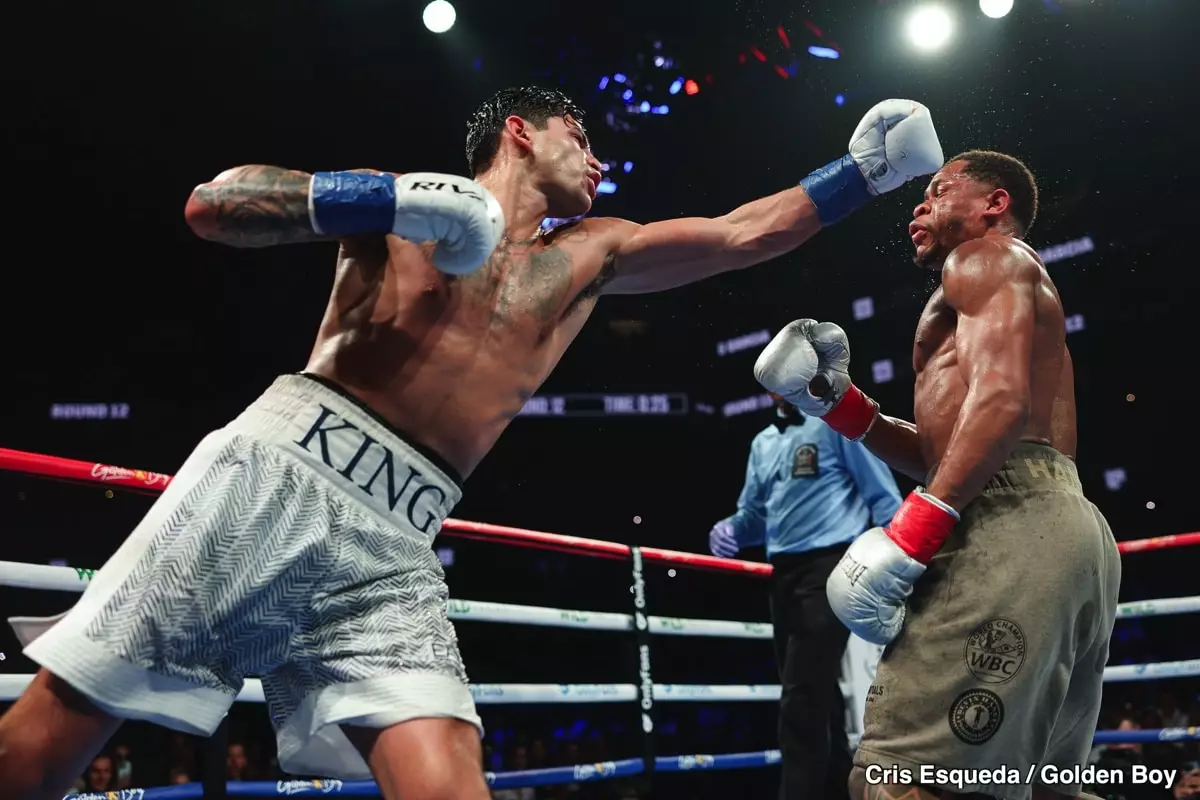In the world of boxing, rivalries often escalate beyond the ring and into the digital sphere, as seen with Ryan Garcia’s recent social media mockery of Devin Haney. After Haney’s recent decision to file a lawsuit citing battery, fraud, and unjust enrichment following their match, Garcia’s sarcastic comments implied that Haney’s financial desperation might warrant a sponsorship arrangement for feminine hygiene products. This adolescent brand of banter underscores the growing trend of fighters using social media as a platform for mockery and psychological warfare, reflecting an era where public perception can be as impactful as the punches thrown in the ring.
Haney’s lawsuit has raised eyebrows not only for its contents but also for its implications on his boxing career. He alleges reputational harm, emotional distress, and lost earnings resulting from his defeat to Garcia, where he suffered three knockdowns and was visibly dominated throughout the bout. The core of Haney’s grievance lies in the fact that Garcia reportedly tested positive for a banned substance, Ostarine, which Haney argues could have influenced the outcome of their fight. For a fighter like Haney, who previously enjoyed an unblemished record, the psychological toll of such a public defeat is profound, but the decision to pursue legal action could be seen as an indication of immaturity or a desperate need to reclaim agency in a sport where image is paramount.
Garcia’s taunts are not just playground insults; they are reflective of a larger sentiment within the boxing community. Social media platforms have amplified Haney’s vulnerability, allowing fans to continuously circulate footage of his knockout, thereby reinforcing the narrative of him being “damaged goods.” This stigmatization seems to paradoxically enhance Garcia’s stature while further isolating Haney. Critics argue that Haney’s choice to litigate may be viewed as an admission of weakness, as there is a prevailing expectation among fighters to resolve conflicts within the confines of the ring.
Moreover, this legal maneuvering raises concerns about Haney’s future employability within the sport. Promotions may view him as a high-risk engagement, fearful that any loss could lead to another lawsuit. Such trepidation could severely limit his opportunities against higher-caliber opponents, confining him to bouts with less marketability, likely affecting his earning potential and career longevity.
In a sport where reputation signifies everything, the ramifications of Haney’s actions could haunt him long after the legal proceedings are concluded. While he seeks vindication through the courts, the fight community is abuzz with skepticism, questioning whether this is the beginning of a new trend wherein athletes opt for legal battles over in-ring confrontations. The fallout from such decisions may reshape the landscape of boxing, leading fighters to reconsider how they address defeat.
The clash between Garcia and Haney extends far beyond a singular fight—it’s an ongoing narrative of embarrassment, rivalry, and the harsh realities of a world where money and reputation intertwine intricately in the realm of professional sports. As both fighters navigate this complex web of consequences, the boxing community waits with bated breath to see how it will all unfold.

